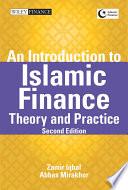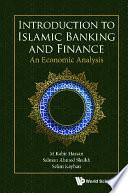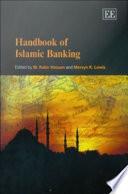
ANTOLOGI FILSAFAT PENDIDIKAN ISLAM; STUDI TERHADAP PEMIKIRAN IBNU SINA
Buku yang ada di tangan pembaca ini adalah hasil karya dari teman-teman mahasiswa Program Doktor Pendidikan Islam kelas PEDI-A tahun akademik 2021-2022 pada mata kuliah Filsafat Pendidikan Islam (Lanjutan). Pendidikan dan filsafat adalah dua hal yang tidak dapat dipisahkan, sebagai ibu dari semua ilmu (mother of knowledge)filsafat dipakai menjadi kerangka teori dasar dalam pengembangan disiplin ilmu pengetahuan. Itulah mengapa dalam pendidikan dikenal cabang ilmu Filsafat Pendidikan, belakangan pendidikan Islam terutama Perguruan Tinggi Kegaman Islam (PTKI) juga menggunakannya sebagai sebuah disiplin ilmu baru yaitu Filsafat Pendidikan Islam dan ini menjadi mata kuliah wajib di Fakultas Ilmu Tarbiyah dan Keguruan (FITK).
- ISBN 13 : 6233167787
- ISBN 10 : 9786233167789
- Judul : ANTOLOGI FILSAFAT PENDIDIKAN ISLAM; STUDI TERHADAP PEMIKIRAN IBNU SINA
- Pengarang : Gunawan, S.Pd.I., M.A., Muhammad Adyan Simanjuntak, S.T., M.M., Siti Marisa, M.A., M.Psi., Mukhlis, S.Pd.I., M.Pd.I., Surianto, S.Pd., M.PMat., Dalmi Iskandar Sultani, S.Pd.I., M.Pd.I., Syarifuddin, S.Pd.I., M.A., Dedi Sahputra Napitupulu, M.Pd., Nelly Agustina, M.Pd.I., Zulkipli Nasution, M.A., Muhammad Zein Damanik, S.Pd., M.Pd., Ir. Ano Suherlan, S.Pd.I., M.Pd., Oktrigana Wirian, S.Pd., M.Pd., Ahmad Asrin, S.Ag., M.A., Selamat Pasaribu, M.Psi., Ahmad Ridwan, M.Pd.I., S.Pd.I., M.A., Muhammad Adyan Simanjuntak, S.T., M.M., Siti Marisa, M.A., M.Psi., Mukhlis, S.Pd.I., M.Pd.I., Surianto, S.Pd., M.PMat., Dalmi Iskandar Sultani, S.Pd.I., M.Pd.I., Syarifuddin, S.Pd.I., M.A., Dedi Sahputra Napitupulu, M.Pd., Nelly Agustina, M.Pd.I., Zulkipli Nasution, M.A., Muhammad Zein Damanik, S.Pd., M.Pd., Ir. Ano Suherlan, S.Pd.I., M.Pd., Oktrigana Wirian, S.Pd., M.Pd., Ahmad Asrin, S.Ag., M.A., Selamat Pasaribu, M.Psi., Ahmad Ridwan, M.Pd.I., S.Pd.I., M.A., Muhammad Adyan Simanjuntak, S.T., M.M., Siti Marisa, M.A., M.Psi., Mukhlis, S.Pd.I., M.Pd.I., Surianto, S.Pd., M.PMat., Dalmi Iskandar Sultani, S.Pd.I., M.Pd.I., Syarifuddin, S.Pd.I., M.A., Dedi Sahputra Napitupulu, M.Pd., Nelly Agustina, M.Pd.I., Zulkipli Nasution, M.A., Muhammad Zein Damanik, S.Pd., M.Pd., Ir. Ano Suherlan, S.Pd.I., M.Pd., Oktrigana Wirian, S.Pd., M.Pd., Ahmad Asrin, S.Ag., M.A., Selamat Pasaribu, M.Psi., Ahmad Ridwan, M.Pd.I., S.Pd.I., M.A., Muhammad Adyan Simanjuntak, S.T., M.M., Siti Marisa, M.A., M.Psi., Mukhlis, S.Pd.I., M.Pd.I., Surianto, S.Pd., M.PMat., Dalmi Iskandar Sultani, S.Pd.I., M.Pd.I., Syarifuddin, S.Pd.I., M.A., Dedi Sahputra Napitupulu, M.Pd., Nelly Agustina, M.Pd.I., Zulkipli Nasution, M.A., Muhammad Zein Damanik, S.Pd., M.Pd., Ir. Ano Suherlan, S.Pd.I., M.Pd., Oktrigana Wirian, S.Pd., M.Pd., Ahmad Asrin, S.Ag., M.A., Selamat Pasaribu, M.Psi., Ahmad Ridwan, M.Pd.I., S.Pd.I., M.A., Muhammad Adyan Simanjuntak, S.T., M.M., Siti Marisa, M.A., M.Psi., Mukhlis, S.Pd.I., M.Pd.I., Surianto, S.Pd., M.PMat., Dalmi Iskandar Sultani, S.Pd.I., M.Pd.I., Syarifuddin, S.Pd.I., M.A., Dedi Sahputra Napitupulu, M.Pd., Nelly Agustina, M.Pd.I., Zulkipli Nasution, M.A., Muhammad Zein Damanik, S.Pd., M.Pd., Ir. Ano Suherlan, S.Pd.I., M.Pd., Oktrigana Wirian, S.Pd., M.Pd., Ahmad Asrin, S.Ag., M.A., Selamat Pasaribu, M.Psi., Ahmad Ridwan, M.Pd.I., S.Pd.I., M.A., Muhammad Adyan Simanjuntak, S.T., M.M., Siti Marisa, M.A., M.Psi., Mukhlis, S.Pd.I., M.Pd.I., Surianto, S.Pd., M.PMat., Dalmi Iskandar Sultani, S.Pd.I., M.Pd.I., Syarifuddin, S.Pd.I., M.A., Dedi Sahputra Napitupulu, M.Pd., Nelly Agustina, M.Pd.I., Zulkipli Nasution, M.A., Muhammad Zein Damanik, S.Pd., M.Pd., Ir. Ano Suherlan, S.Pd.I., M.Pd., Oktrigana Wirian, S.Pd., M.Pd., Ahmad Asrin, S.Ag., M.A., Selamat Pasaribu, M.Psi., Ahmad Ridwan, M.Pd.I., S.Pd.I., M.A., Muhammad Adyan Simanjuntak, S.T., M.M., Siti Marisa, M.A., M.Psi., Mukhlis, S.Pd.I., M.Pd.I., Surianto, S.Pd., M.PMat., Dalmi Iskandar Sultani, S.Pd.I., M.Pd.I., Syarifuddin, S.Pd.I., M.A., Dedi Sahputra Napitupulu, M.Pd., Nelly Agustina, M.Pd.I., Zulkipli Nasution, M.A., Muhammad Zein Damanik, S.Pd., M.Pd., Ir. Ano Suherlan, S.Pd.I., M.Pd., Oktrigana Wirian, S.Pd., M.Pd., Ahmad Asrin, S.Ag., M.A., Selamat Pasaribu, M.Psi., Ahmad Ridwan, M.Pd.I.,
- Kategori : Religion
- Penerbit : Penerbit K-Media
- Bahasa : id
- Halaman : 266
- Google Book : https://play.google.com/store/books/details?id=v-hnEAAAQBAJ&source=gbs_api
-
Ketersediaan :
Tugas kekholifahaan menuntut manusia itu berilmu pengetahuan. Sedangkan manusia sebagai hamba Allah menunjukkan dan membuktikan baktinya kepada Allah SWT. Kajian tentang manusia tidak bisa dipisahkan dengan pendidikan.









